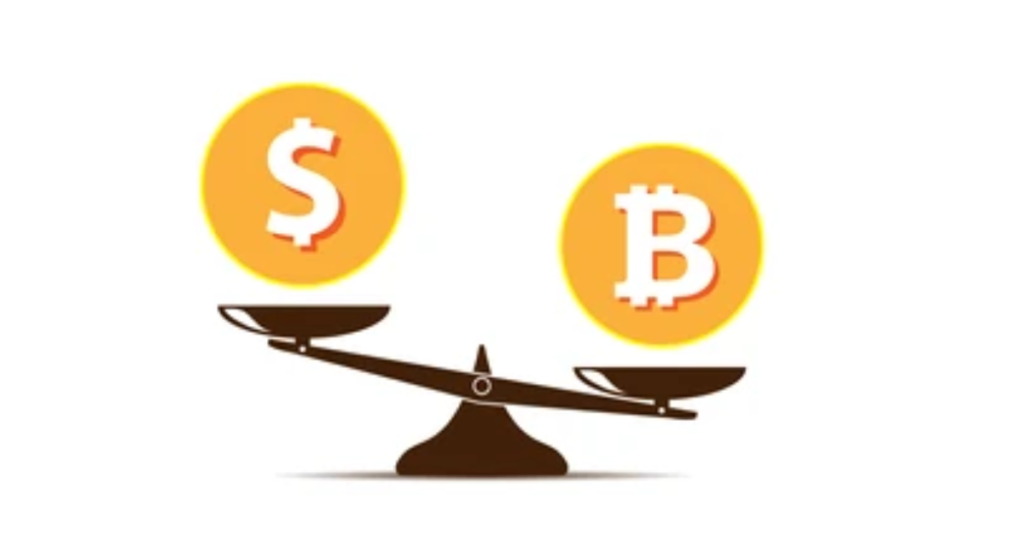Cryptocurrency has evolved from a niche digital asset to a widely accepted form of exchange, with millions of people using it for various purposes. One of the key aspects of owning cryptocurrency is knowing how to convert it to cash when needed. Selling cryptocurrency for cash can be a straightforward process, but understanding the available methods, risks, and fees is essential to maximize your profits and ensure a secure transaction. This guide will walk you through the necessary steps and considerations involved in selling your cryptocurrency for cash.

Understanding Cryptocurrency and its Selling Process
Before diving into the selling process, it’s important to understand what cryptocurrency is and how it works. Cryptocurrencies, such as Bitcoin, Ethereum, and others, are digital or virtual currencies that use cryptography for security. Unlike traditional currencies issued by governments (fiat currencies), cryptocurrencies are decentralized and run on blockchain technology, which is a distributed ledger that records all transactions.
Selling cryptocurrency for cash involves converting your digital assets into fiat currency (such as US dollars, euros, or other national currencies) through a series of steps. This can be done through online platforms, peer-to-peer (P2P) networks, or physical locations, depending on your preference, convenience, and the availability of services in your region.
Methods to Sell Cryptocurrency for Cash
There are several ways to convert your cryptocurrency holdings into cash. The method you choose will depend on factors such as your location, the amount you wish to sell, security concerns, and the speed at which you need access to your funds. Below are the most common methods for selling cryptocurrency for cash:
1. Using Cryptocurrency Exchanges
One of the most common and straightforward methods to sell cryptocurrency for cash is through a cryptocurrency exchange. These platforms allow users to trade digital assets for fiat currency, which can then be withdrawn to a bank account.
Popular cryptocurrency exchanges include:
- Coinbase
- Binance
- Kraken
- Gemini
How it works:
- Create an account: Sign up for an account on a cryptocurrency exchange platform.
- Verify your identity: Most exchanges require you to complete a Know-Your-Customer (KYC) process to verify your identity. This helps comply with regulations and prevent fraudulent activities.
- Deposit your cryptocurrency: Transfer the cryptocurrency you wish to sell into your exchange account.
- Sell your cryptocurrency: Once the cryptocurrency is in your exchange wallet, you can sell it for your preferred fiat currency (USD, EUR, etc.).
- Withdraw to your bank account: After the sale, you can withdraw your fiat funds to your linked bank account. Depending on the exchange, this process can take anywhere from a few hours to several business days.
Pros:
- Reliable and secure platform.
- Provides liquidity and market rates.
- Easy to use, especially for beginners.
Cons:
- Transaction fees and withdrawal charges may apply.
- Some exchanges might have regional restrictions.
- The process may take time due to the verification steps.
2. Peer-to-Peer (P2P) Platforms
Peer-to-peer platforms allow you to sell cryptocurrency directly to other individuals, bypassing centralized exchanges. These platforms act as intermediaries, ensuring that both parties are protected during the transaction. P2P platforms like LocalBitcoins and Paxful allow you to set your terms, including the payment method and price.
How it works:
- Create a profile: Sign up on a P2P platform.
- List your cryptocurrency: Select the cryptocurrency you want to sell and list it for sale at your desired price.
- Choose a payment method: P2P platforms typically support various payment methods, including bank transfers, PayPal, and even cash-in-person transactions.
- Finalize the deal: Once a buyer agrees to your terms, the platform holds the cryptocurrency in escrow while the transaction is completed.
- Receive payment: After confirming the payment, the cryptocurrency is released to the buyer, and you receive the fiat currency.
Pros:
- You can often get better rates compared to exchanges.
- Multiple payment options, including local methods like cash in person.
- Flexibility in transaction terms.
Cons:
- May involve higher risk if the buyer is not trustworthy.
- Requires more effort to vet buyers and negotiate terms.
- The platform may charge fees.
3. Using Bitcoin ATMs
Bitcoin ATMs (BTMs) are physical machines that allow you to sell cryptocurrency for cash. Similar to traditional ATMs, Bitcoin ATMs are located in various cities around the world, enabling you to withdraw cash in exchange for your cryptocurrency. These machines are convenient but may come with higher fees.
How it works:
- Find a BTM near you: Use an online map service like CoinATMRadar to locate a nearby Bitcoin ATM.
- Initiate the transaction: Select the option to sell your cryptocurrency on the machine.
- Transfer your cryptocurrency: Send your cryptocurrency to the wallet address provided by the BTM.
- Receive cash: Once the transaction is confirmed, the BTM will dispense cash.
Pros:
- Quick and convenient for local transactions.
- Anonymous in some cases, with minimal identification required.
Cons:
- High transaction fees compared to other methods.
- Availability depends on your location.
- Limits on the amount of cryptocurrency you can sell at one time.
4. Selling Cryptocurrency to Friends or Family
If you prefer a more personal approach, you can sell your cryptocurrency directly to a friend or family member. This method avoids the fees and potential risks of third-party platforms, as well as the time involved in bank transfers.
How it works:
- Agree on the terms: Discuss the amount, price, and payment method with your friend or family member.
- Transfer the cryptocurrency: Send the cryptocurrency to their wallet.
- Receive payment: Accept the agreed-upon payment method, whether it’s cash, bank transfer, or another method.
Pros:
- No fees or middlemen involved.
- Fast and personal transaction.
Cons:
- Potential for misunderstandings or disputes.
- Limited by your network of friends or family.
Factors to Consider When Selling Cryptocurrency
While selling cryptocurrency for cash can be straightforward, there are several factors you should consider before proceeding with a sale. These include security, fees, taxes, and transaction speed.
Security
Security is paramount when selling cryptocurrency. Always use trusted platforms and double-check addresses and payment details. In the case of peer-to-peer transactions, only use the platform’s escrow service to avoid scams. Additionally, be cautious when selling large amounts of cryptocurrency, as this can attract fraudsters.
Transaction Fees
Most platforms charge a fee for selling or withdrawing cryptocurrency. These fees can vary depending on the method used, the platform, and the payment method chosen. For example, exchange fees can range from 0.1% to 1% of the transaction, while P2P platforms may charge a fixed fee for their services. Bitcoin ATMs typically have higher fees due to the convenience they offer.
Tax Implications
In many countries, selling cryptocurrency is a taxable event. This means that you may be required to report your gains or losses to the tax authorities. Be sure to consult with a tax professional to understand the tax implications of selling cryptocurrency in your jurisdiction. In the United States, for example, the IRS treats cryptocurrency as property, meaning you must pay taxes on any capital gains.
Transaction Speed
The speed at which you can access cash after selling cryptocurrency depends on the method you use. While exchanges typically require a few days for bank withdrawals, P2P platforms may take hours or days, depending on the buyer’s payment method. Bitcoin ATMs provide instant cash, though they come with higher fees.
Conclusion
Selling cryptocurrency for cash has become an increasingly accessible process, with multiple methods to suit different needs and preferences. Whether you choose to use a cryptocurrency exchange, peer-to-peer platform, Bitcoin ATM, or a direct sale to friends or family, it’s important to weigh the pros and cons of each option. Always prioritize security, be mindful of fees, and stay informed about the tax implications of your transaction.




